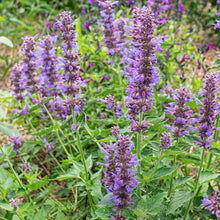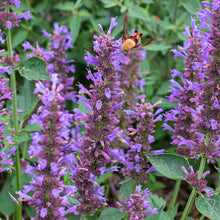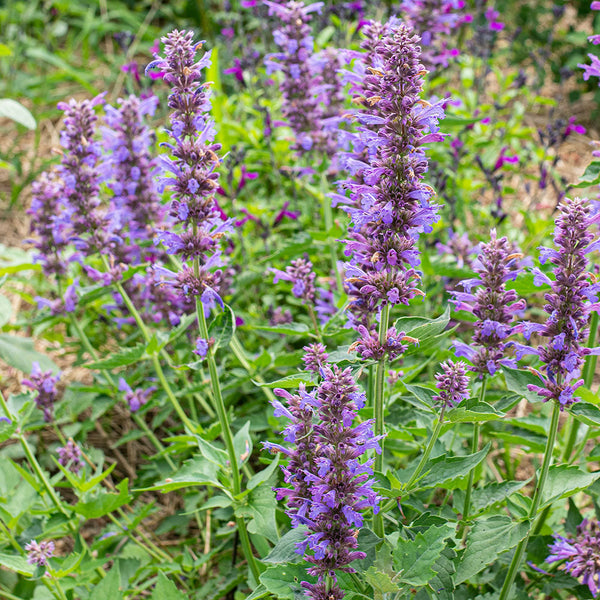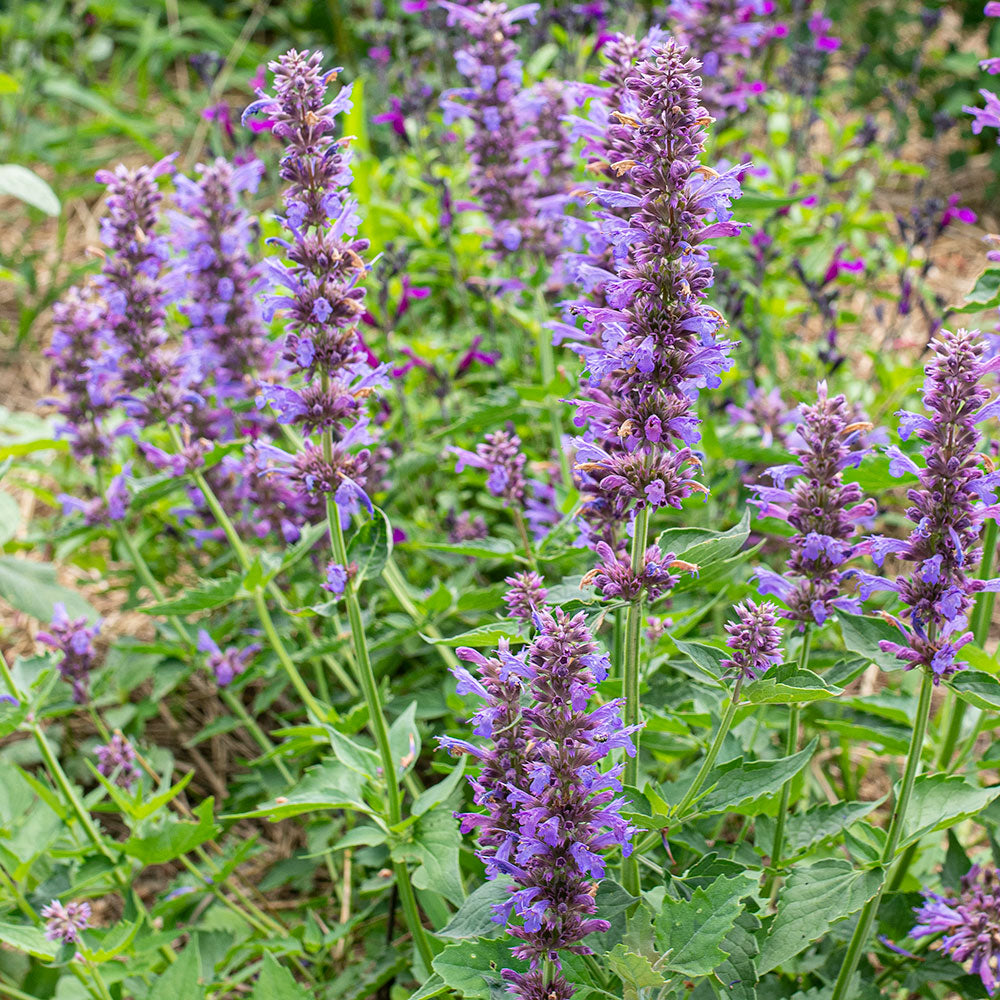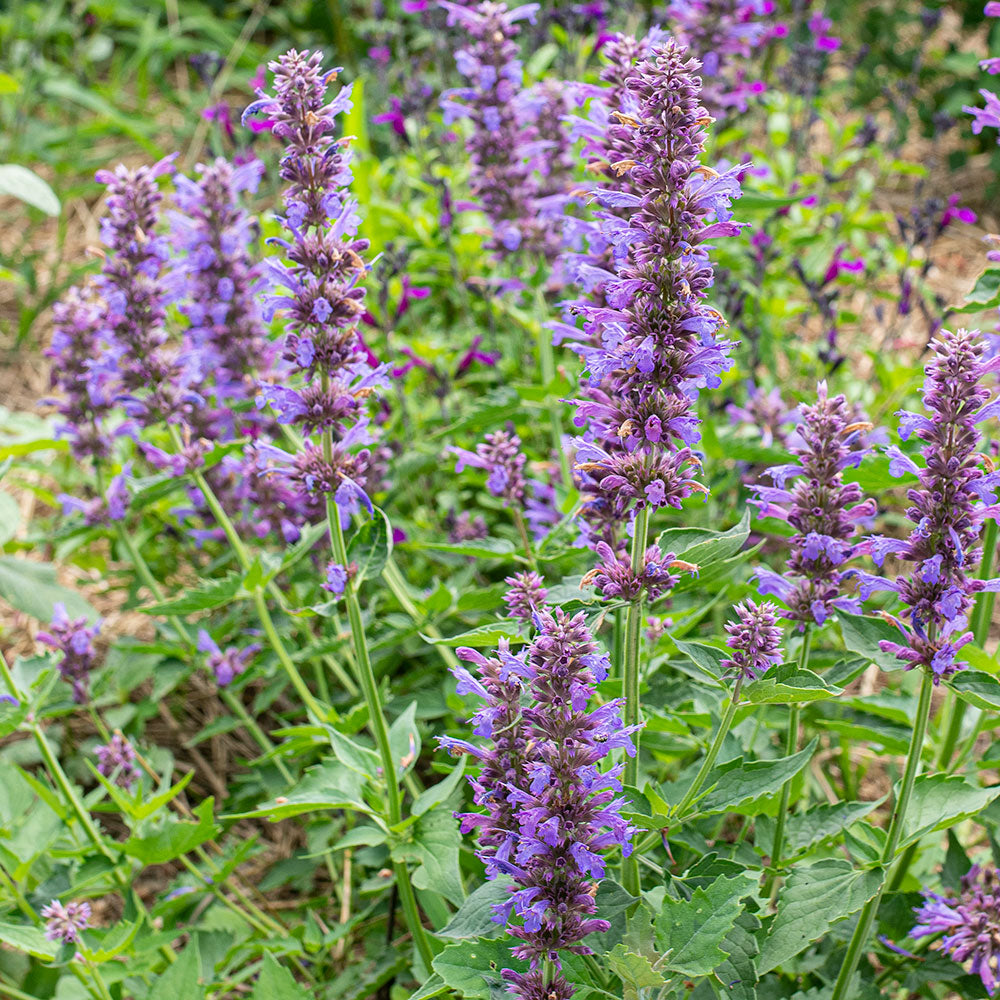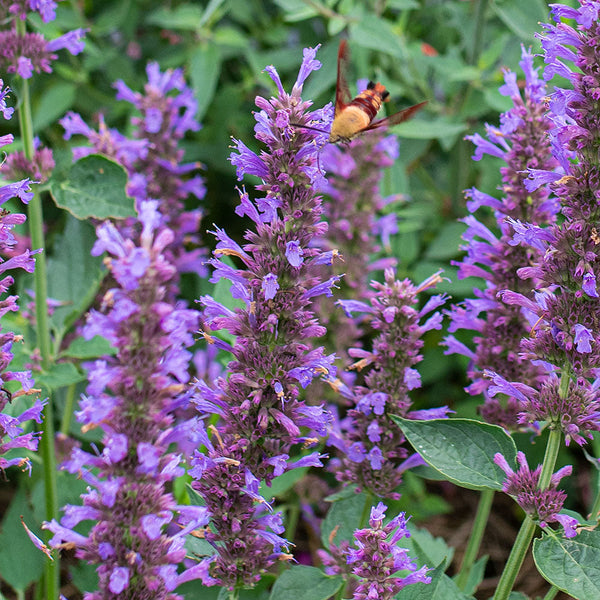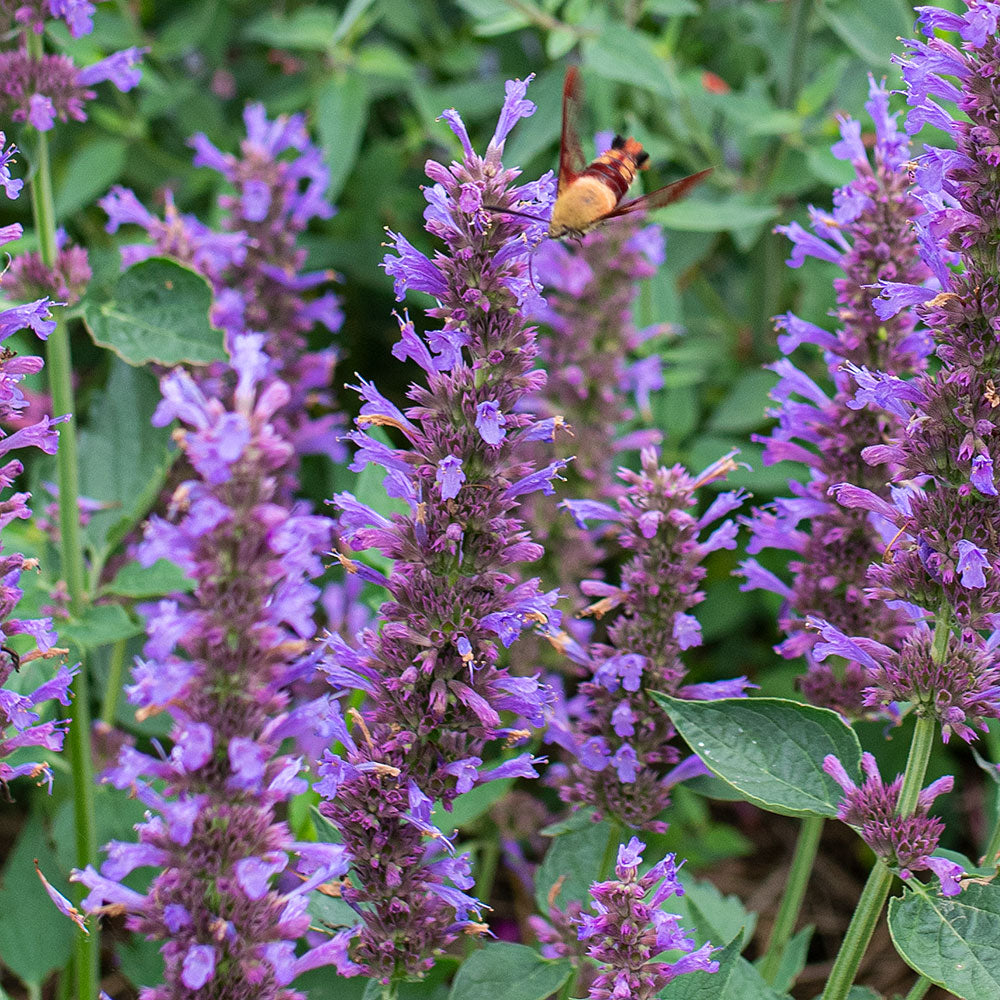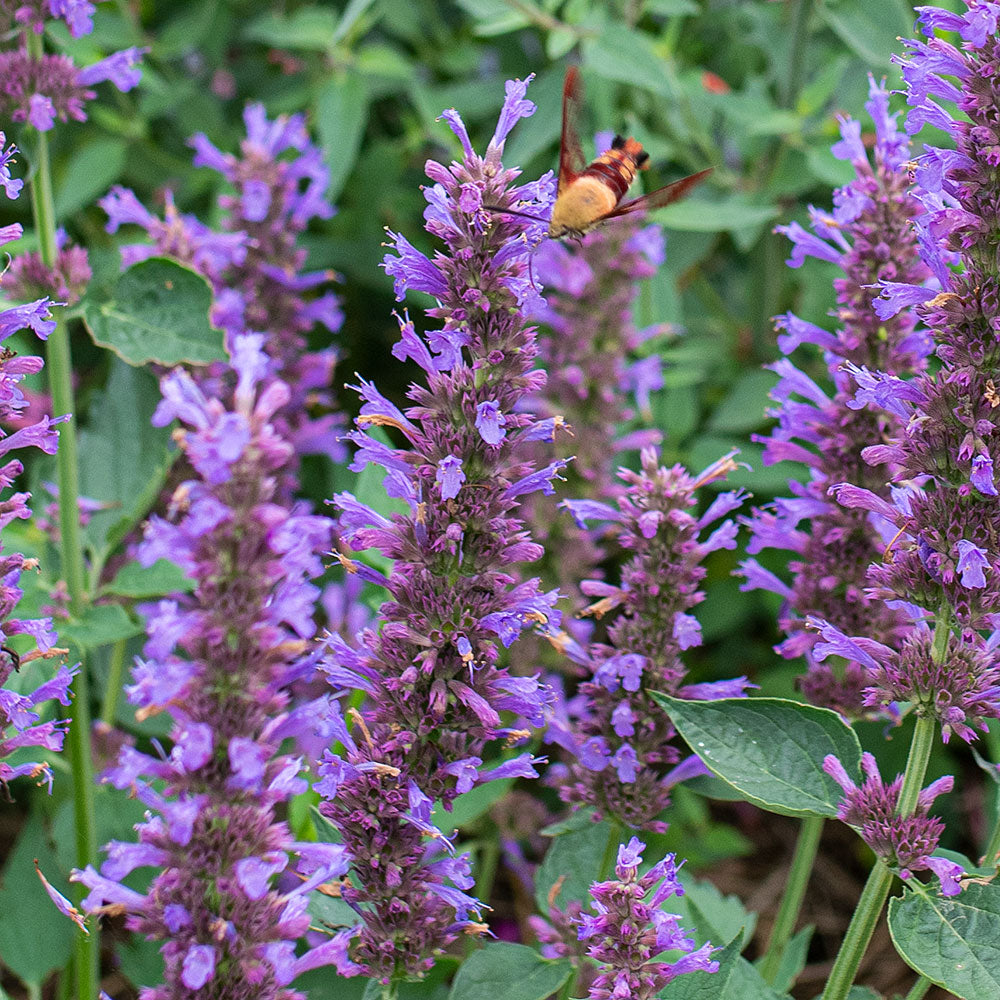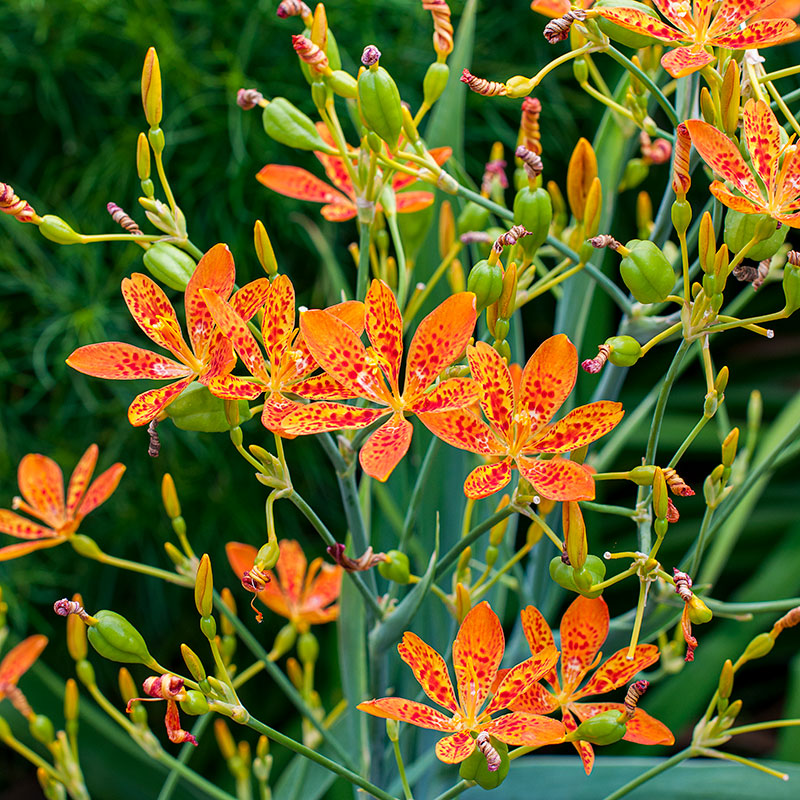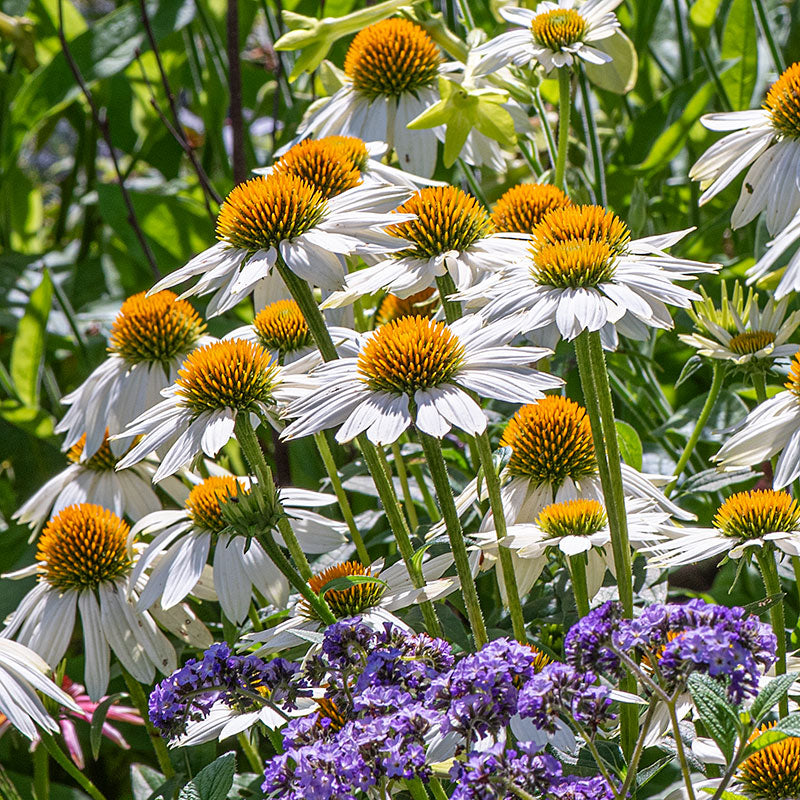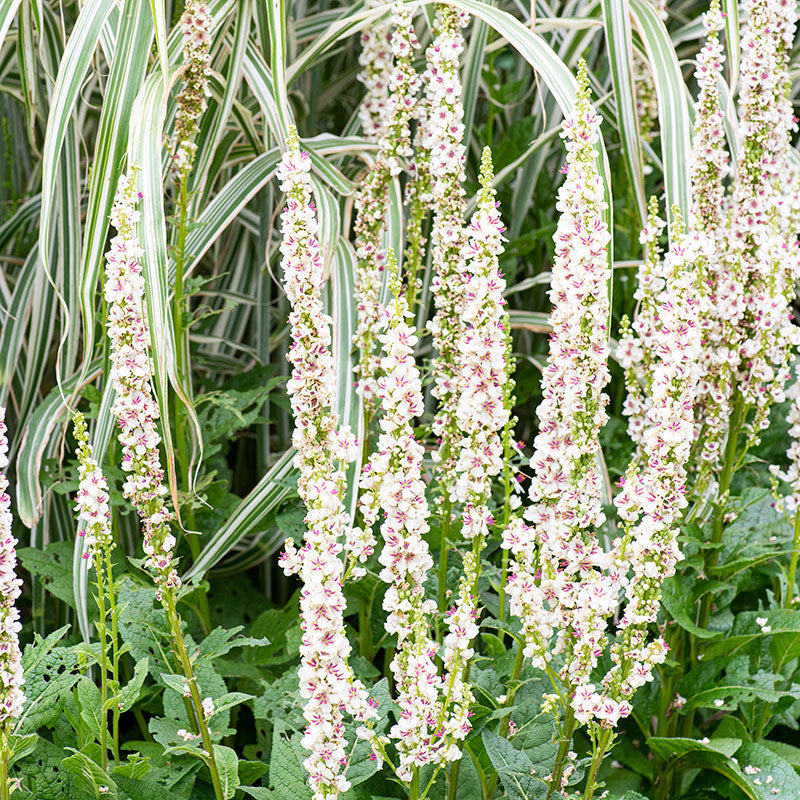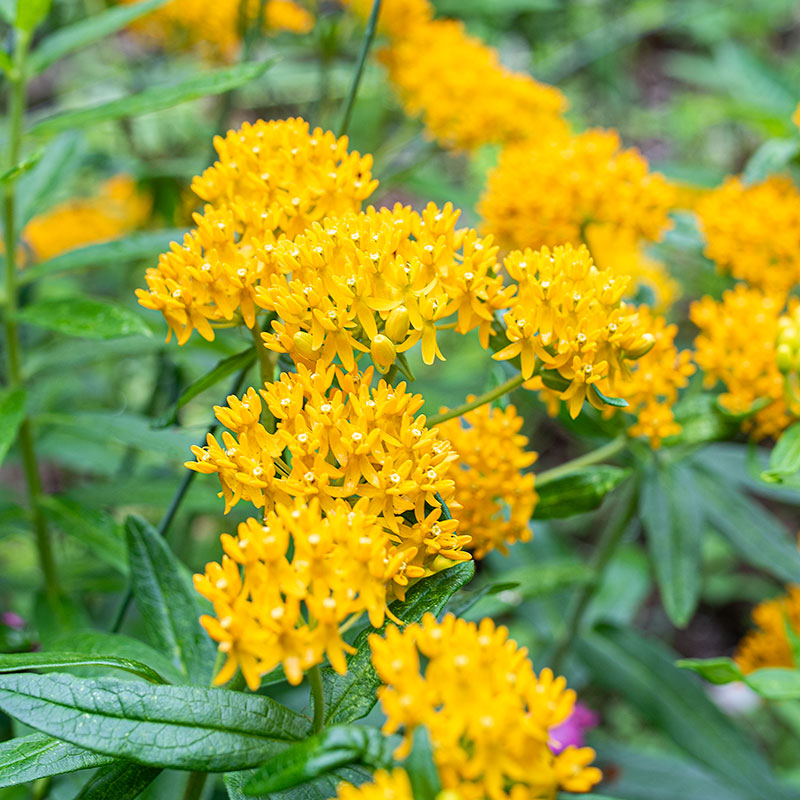WHEN TO SET OUTSIDE
In springtime after all danger of frost has passed.
PLACEMENT & CULTIVATION
Agastache grows best in freely draining gritty soils, where it will be firmly upright in growth; rich, moist soils encourage a more sprawling habit and a decrease in flowering. Plant in a raised bed or amend heavier soils with generous amounts of compost, sand, and gravel for the best overwintering success. A winter mulch of pine needles or stone is best in Northern areas, as they do not harbor much moisture. Then, wait until spring to cut down to further encourage its perennial nature. A pollinator-friendly variety that unfailingly attracts hummingbirds, butterflies, and bees, while the minty, anise-scented foliage is unappealing to deer and rabbits. In their first year of growth, perennials bulk up roots and foliage, blooming more abundantly starting the second year. Self sows.
Watering Details:
Watered regularly the first season, Agastache are drought tolerant once fully established–at that time water during prolonged dry spells every two weeks with a good, deep soaking.
Soil pH:
Slightly acid to slightly alkaline 6.0-7.5 pH
Fertilizer:
Apply a 1/2" layer of compost annually.
Diseases & Pests:
Agastache are generally not susceptible to pests or disease but can be affected by mildew if summer weather is dry. This can be avoided by preventively spraying with a baking soda or organic fungicide every two weeks, depending on local weather conditions.
When to Cut for Bouquets:
1/3-1/2 florets opened































